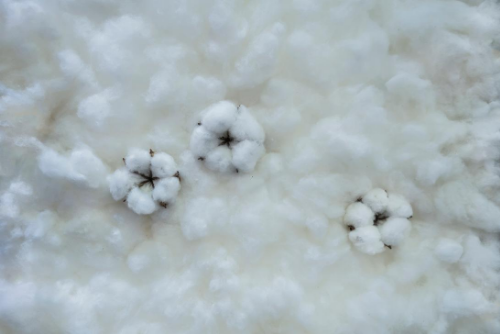Cotton is the all-natural fiber of choice for the ages, going back to the Egyptians and other civilizations of the ancient world. As humankind has developed different needs and wants for fiber-built goods, we keep coming back to the original fiber used in some of the first clothing for a variety of applications including nonwoven hygiene and baby care products, as well as dental and medical supplies like cotton rolls.
In this series, we’ll explore what makes cotton so special–its unique properties that have driven its versatility and popularity–from a performance perspective–for thousands of years.
Fiber Length
One of the aspects of cotton that’s so perfect is its imperfection, especially with regard to one of its key intrinsic properties, fiber length. Unlike its artificial counterparts, all-natural cotton features varying lengths of fiber with every plant. This variation is referred to in the industry as length distribution or fiber array.
Cotton length is measured and reported along the supply chain as the upper half mean length (average length of the longest 50 percent of fibers). This measurement yields an incredibly accurate reading, to one hundredth of an inch.
The longer the fibers, the stronger, softer, and more durable the fabrics manufactured can be.
Micronaire
Another key performance quality of cotton is micronaire. This term is unique to the world of cotton, as it expresses a measurement of the fiber’s maturity and fineness, in diameter. Micronaire is a unit-less value, meaning that It’s the measurement of airflow resistance through a 2.34 gram fiber specimen that is compressed to a specific volume. Micronaire can be converted to approximate denier value by dividing micronaire value by 2.82.
This quality is important for several reasons, as micronaire can influence sustainability through reducing processing waste, as well as impact quality in processing (spinning performance) and of the end product (yarn and fabric quality, dyed fabric appearance).
Fiber Strength
Fiber strength, another performance attribute of cotton, is measured by breaking the fibers held between clamp jaws. This measurement is expressed as grams per tex, which is the force in grams required to break a bundle of fibers one tex unit in size. A tex unit is equal to the weight in grams of 1000 meters of fiber.
Of particular interest to product developers and manufacturers is cotton’s high degree of polymerization that affects its wet and dry strength as well as its high degree of crystallinity. This latter attribute is a result of how the hydroxyl groups on the cellulose chains enhance the ordering of the polymer chains. While cotton, rayon, and polyester all fall within a similar range of grams per tex when dry, the three diverge greatly when exposed to water. While polyester maintains the same level of strength, rayon falters, suffering a sharp decline in strength. Cotton, however, outperforms them both, with a sharp increase in strength when wet.
Cotton’s increased wet strength has obvious positive implications for any use for the fiber that may be exposed to the elements.
Absorption
Since cotton is a pure cellulose, comparable to other similar forms of cellulose like that of trees. The cotton fiber is composed of polymer chains of cellulose, water, and fatty content. In its natural form, the fatty content contained in and around the fibers are the components that render the fibers naturally hydrophobic. Upon removal of that fatty content, the fibers become hydrophilic. Perhaps no other statistic related to cotton is as staggering as this one: cotton can absorb about 25 times its weight in water.
Cotton’s ability to absorb water, after transformation in processing, delivers several application options. These include the medical uses for cotton, where materials used for wound care must be highly absorbent and easy to apply comfortably and dispose of properly.
Better Cellulose: Cotton’s Secret Weapon for High Performance
As we mentioned above, cotton is made of cellulose, much like competing artificial fibers like rayon, which derives originally from wood pulp fibers. Cellulose is defined as a macromolecule made up of anhydroglucose unit connected by 1, 4 oxygen bridges with the polymer-repeating unit being anhydro-beta-cellulose.
Cotton cellulose differs from wood and rayon cellulose by having higher degrees of polymerization and crystallinity. The degree of polymerization is the number of repeating units that are linked together to form a molecule of cellulose. Crystallinity indicates that the fiber’s cellulose molecules are closely packed and parallel to one another. Higher degrees of polymerization and crystallinity of polymers are related to higher strengths.
Due to the increased degree of crystallinity and hydrogen bonding between the molecules in the crystalline areas in cotton, moisture can’t penetrate the molecules. Moisture-penetrating molecules can act as a lubricant and result in loss of strength. Therefore, as noted previously, cotton cellulose does not lose strength when wet like rayon does; in fact, it gets stronger. Synthetic fibers like polyester are hydrophobic; therefore their strength is not affected at all by moisture.
In the next installment of our series on the intrinsic properties of cotton, we’ll take a look at the shape and morphology of perhaps the world’s most versatile plant-based fiber for improving the human condition.
